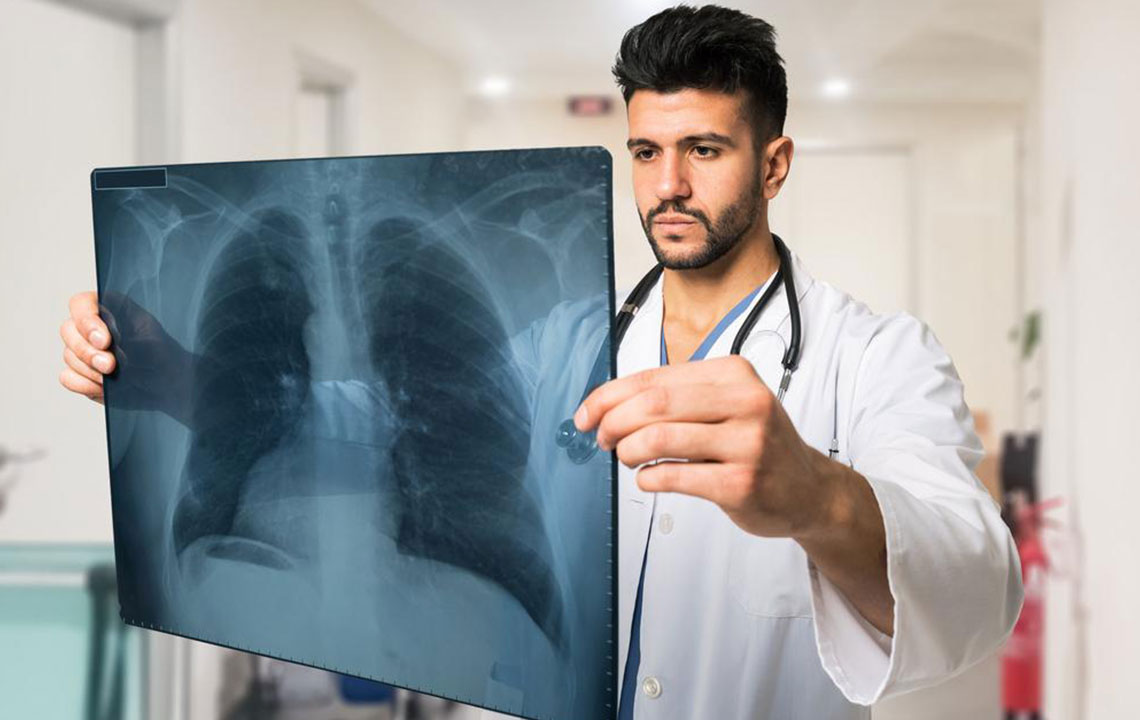9 Pneumonia Symptoms You Must Be Aware Of
Pneumonia is one of the dreaded illness during the colder months. A life-threatening disease, pneumonia is caused by a bacteria, fungus or virus that infects the lungs. The infection leads to inflammation of air sacs in the lungs. Pus and other liquid form inside the air sacs. This makes breathing quite difficult for the affected person.

The following are some of the most common pneumonia symptoms:
- Fever: Fever is one of the common pneumonia symptoms among children. In adults, it is usually a low-grade fever that is generally an indication of upper respiratory infection. If the temperature goes beyond 105 degrees F, you know that your body has developed pneumonia infection.
- Chills: When pneumonia strikes, the overall temperature of your body starts dropping. To regulate the temperature, the body works overtime, and you start experience chills. This often accompanied by the chattering of teeth. Chills usually precede fever and are a clear indication of pneumonia.
- Breathing problem: Pneumonia is usually brought on by cold or flu. Naturally, your airways will be blocked. With pneumonia-causing an infection of your lungs, you will also have trouble in breathing. This will further cause wheezing and coughing. Your breathing will become shallow and labored. Difficulty in breathing will lead to lack of oxygen in your lungs, which will further aggravate other pneumonia symptoms.
- Chest pain: With your lungs infected, you will experience a persistent pain in your chest. This will be aggravated by persistent coughing, wheezing, and shortness of breath. You will also feel a tightening of your chest as pneumonia attacks your upper respiratory system as well. Chest pain is usually an indication of severe pneumonia.
- Fatigue: Due to a weakened immune system and persistent fever, one of the most common pneumonia symptoms is a constant feeling of fatigue. Difficulty in breathing leads to lack of oxygen in the body. This decreases your stamina and makes your feel tired all the time. Depending on your age and severity of pneumonia, this symptom can last from two weeks to a month.
- Mucus: Your respiratory system will produce mucus as a defense mechanism to expel the pneumonia-causing organism. One of the tell-tale pneumonia symptoms is blood in your mucus. Or if you’re a re coughing up an odd rusty color, you will know that your lungs have been infected by pneumonia. You might also observe a greenish tinge on the mucus.
- Nausea: When pneumonia strikes the body, it attempts to expel every type of foreign matter. The body does not distinguish between food or harmful organism. With fever and constant coughing, you also tend to lose your appetite. This brings in occasional bouts of nausea and vomiting. The digestive system is irritated and tends to reject all the nutrition you try you consume.
- High heart rate: One pneumonia symptom causes another. Difficulty in breathing causes a rapid increase in your heart rate. Since you have a difficulty in breathing, there is lack of oxygen going to your heart. This elevates your heart beats. If you observe that your heart rate is above 100 beats per minute for a substantial period, this can be a cause for concern.
- Diarrhea: Although pneumonia is not related to the digestive system, it has been observed that many patients experience diarrhea or loose stools when affected by pneumonia. It also causes heartburn, indigestion and an upset stomach. This is perhaps a defensive tactic of the body to expel foreign matter, whether it is food or any other substance.
Most often it is quite difficult to detect the organism that causes pneumonia symptoms in a person. The onset of pneumonia is usually preceded by a severe bout of cold or flu. People who have a weak immune system, lung diseases such as asthma or COPD, AIDS or are chain smokers, or heavy drinkers are more prone to an attack of pneumonia. These conditions make your lungs weak.
So, when any pneumonia-causing organism enters your body through breathing or consumption of any contaminated food or drink, your lungs are unable to fight the infection leading to the inflammation of the air sacs, also known as alveoli. This type of pneumonia is also known as aspiration pneumonia. Pneumonia is also common in situations when a person has been on ventilator support for long. Known as VAP (Ventilator-associated pneumonia), it has been observed to be a common occurrence in patients who have in intensive care for quite some time.
If detected during the initial stage, pneumonia symptoms can be easily treated using antibiotics and medications. Signs of improvement are observed within 2 to 3 days. If the symptoms are quite severe, hospitalization might be required. Make sure you consult a doctor immediately if you observe a persistent occurrence of pneumonia symptoms.











